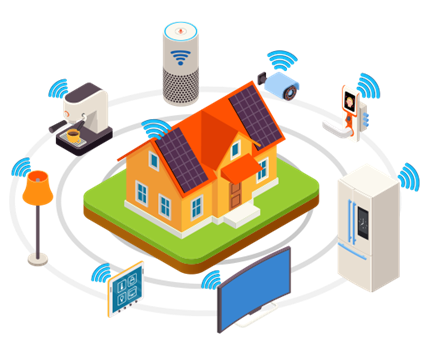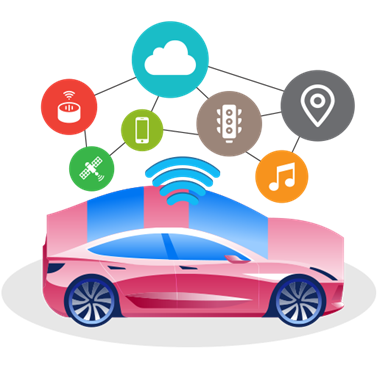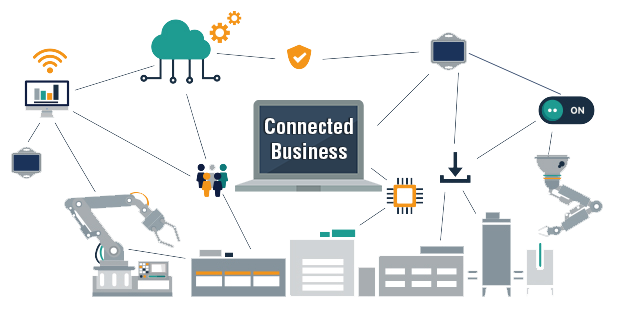Ways in which IoT is improving our lives

Prima Saraiya
The term Internet of Things (IoT) is increasingly being used to define devices that specifically communicate with the local network, the internet, and each other, independent of human action. IoT is wearable and portable, creating a connected world by transforming surrounding physical objects into an ecosystem of information that rapidly changes the way humans live, says Prima Saraiya, senior marketing executive, Volansys.
The number of IoT devices has drastically increased in recent years. In fact, a research by Cisco says, there will be as many as 50 billion connected devices by the year 2020. Innovations in IoT are continuing to make devices more intelligent, which in turn creates infinite technological solutions that make human lives easier. Let us see few scenarios.
Homes becoming smarter
With advances in connected technology, home automation has transformed significantly, and there are exciting new applications that are becoming mainstream today. Smart home technology involves connecting all smart electronic devices and appliances in the home to one single network.
When connected to this network, electronic devices and appliances are able to communicate with each other and with the user. Owners can operate everything through their smartphones, voice-enabled smart assistants like Amazon Alexa or Google Home, or even better without saying anything!
Today, even routine smart home devices are being integrated with Machine Learning technology. Owners can make their doors smarter with Face Recognition. They can give access to friends and family to their houses by registering their faces in the systems, which enhances home security.
For example, if users are running out of milk their smart refrigerators can identify items to be refilled and place an order on Amazon. House lights and air-conditioning units (ACs) can be connected to their car GPS to be turned on when the owner’s car is a few kilometres away from home, to give an environment the owner likes on his or her arrival.
This is how smartness beyond user interaction enhances the standard of living by offering convenience, security, efficient power usage and more, regardless of whether the owner is at home or not. The demand for home automation is likely to be supported by continued development of artificial intelligence (AI) with smart home devices, taking IoT one step further by offering AI-powered houses. This development is part of the next wave of smart home technology evolution that adds a lot of predictive and analytical capabilities to a house.

Fig 1: Smart Homes
Automobiles changing for better
The IoT impacts all aspects of human lives, and cars are no exception. The upswing of connected cars, self-driving cars, controlled via intelligently crafted technologies, Wi-Fi, smartphones and voice, is in full flow. Scenarios that were once thought of as fiction are becoming a reality.
It has been projected that 10 million self-driving cars will hit the road by 2020 , with companies such as Tesla, Chevrolet, Mercedes, and others taking the lead. Self-driving cars use a series of connected sensors and high-end cameras equipped with obstacle avoidance and predictive modeling that makes them follow traffic rules and bypass obstacles.
IoT connectivity processes the output from these sensors/cameras, plots a pathway, and sends instructions to the controls of the car. Nowadays, cars are connected to weather forecasting systems and can receive information from the cloud about weather conditions, and take intelligent actions such as closing windows.
Ford, in partnership with Amazon, has brought the popular Alexa engine to the car taking infotainment systems to the next stage. Audi –provides fault identification solutions in cars enabled by augmented reality (AR) and IoT. Users just have to hover the phone camera over the car engine and it quickly shows the faulty part, connects to the cloud for a solution and shows the steps to be performed. This altogether takes the transportation and in-car experience to a different level.
IoT-enabled sensors in the operational modules of vehicles monitor parameters like pressure, temperature, weight, etc. and its stored data can update owners with predictive maintenance.
This also brings a shift in responsibilities. Manufacturers now have to master the technology of connected/self-driving cars to perfection, and IoT integrates the controlling part thereby making human lives efficient, faster and easier.

Fig 2: Smart Automobiles
Connected businesses
Apart from personal lives convenience, there are numerous ways IoT can help businesses, factories and people at work. With IoT, businesses can manage and control inventory in a more efficient way and can track their product performance by connecting their devices to the cloud, collecting user data and analysing it.
For example, Whirlpool collaborated with IBM to connect its home appliances and analyse consumer data to get insights on the consumers who purchased Whirlpool products. The future of businesses lies in connected offices/factories with sensor based machines, connected logistics and analytical forecasting models based on AI.
A large volume of data is received from data centres, production systems and sensors, most of it in real-time. This aids businesses in gaining better insights into the productivity, operations, and customer behaviour, offering opportunities for innovation and growth.
Similarly, the future of retail business also lies in connecting with the customer at a personal level and enhancing their experience. Smart fitting rooms and predictive recommendations with IoT, AR and AI are transforming the merchandising industry.
IoT enhances tracking of assets (machinery, equipment, tools, etc.) using sensors and connectivity that help organisations with run-time benefits like detecting issues and running preventive maintenance on time to improve asset utilisation. IoT-integrated sensors and video cameras also help monitor the workplace so that equipment/infrastructure safety and protection against physical threats are ensured.

Fig 3: Connected Businesses
Above are just a few examples of how IoT is improving our lives today. There are multiple segments like healthcare, manufacturing, agriculture, etc. that are improving user experience through smarter implementation of IoT systems. It will be interesting to see how IoT will continue to transform the world in the coming years.
The author is Prima Saraiya, senior marketing executive, Volansys
Comment on this article below or via Twitter @IoTGN
